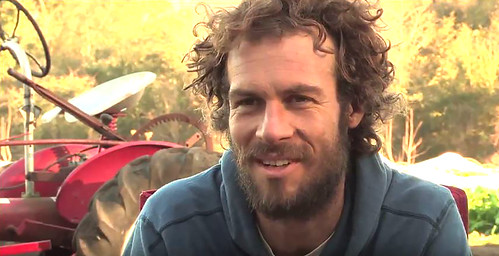
Last week, the USDA Agricultural Marketing Service’s National Organic Program (NOP) announced new resources resulting from our Sound and Sensible Initiative, which is aimed at making organic certification more accessible, affordable, and attainable. Today, we are introducing guides, videos, and other tools – all produced by our partners in the organic community – that will help producers better understand the organic option and where to start.
Interactive Video: “The Road to Organic Certification” (WILL and Carolina Farm Stewardship): This video puts viewers in the shoes of two farmers as they consider organic certification. Viewers make decisions with the farmers as they learn about applications, organic system plans, and the roles and relationships of certifiers, inspectors, and producers.
Consumer Guide and Videos: “What’s the Organic Value Proposition?” (Northeast Organic Farming Association of Vermont – NOFA-VT): This brochure and video series identifies the benefits for farmers who pursue organic certification. Organic integrity, certification, stewardship, and value are discussed from the perspective of organic farmers.
Videos: "Organic Certification Made Simple: Bite by Bite" (Florida Organic Growers – FOG): In this video series, farmers discuss their experiences with obtaining organic certification. Video segments show viewers how the USDA organic regulations translate to on-farm practices by following a farmer on his journey through the organic certification process, providing an overview of organic production requirements and the process of organic certification. The videos highlight the benefits of organic certification, demystify perceived barriers, and outline how farmers can overcome challenges during the certification and renewal process.
Videos and Self-Assessment Tool for Prospective Producers Transitioning to Organic (California Certified Organic Farmers – CCOF): In this video series, viewers hear from organic producers about why they transitioned to organic operations. A series of videos—two in English and one in Spanish—include interviews with organic producers about their certification experiences. The video is accompanied by a web-based self-assessment tool with interactive questions to help farmers evaluate their readiness to apply for organic certification.
“Steps to Certification, Recordkeeping, and Preventative Practices” Videos and Costs of Certification Web Application (Washington State Department of Agriculture): Three videos provide viewers with a step-by-step approach to prepare for organic certification. The first video provides an overview of the organic certification process; the second video describes activities and techniques that help farmers avoid crop pest, weed, and disease problems; and the third video gives instruction for developing and maintaining good record-keeping practices. In addition, a user-friendly Web based application helps users develop a cost-benefit analysis for pursuing organic certification. The tool helps users consider certification costs, additional licensing requirements, and other resources.
Next month, we will launch resources to help farms and businesses understand the USDA organic standards, certification process, and inspection in more depth. Stay tuned.

